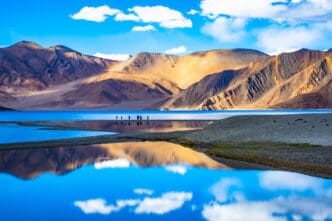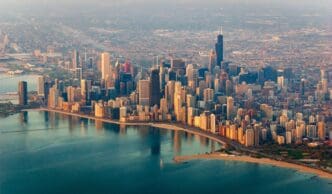For the intrepid traveler seeking a destination that truly engages all five senses, Morocco offers an intoxicating blend of ancient traditions and vibrant daily life. This North African kingdom, a crossroads of Arab, Berber, and European cultures, invites visitors into its labyrinthine medinas, aromatic souks, and stunningly diverse landscapes. While accessible year-round, the ideal times to visit are spring (March to May) and autumn (September to November), when the weather is pleasantly warm, perfect for exploring cultural capitals like Marrakech, Fes, and Chefchaouen. A journey here is a profound cultural immersion, rewarding those who arrive with an open mind and a spirit of curiosity, ready to embrace the warmth of its world-renowned hospitality and the depth of its historical roots.
Understanding the Cultural Tapestry
To truly appreciate Morocco, one must first understand the rich layers of its identity. It is a nation shaped by centuries of migration, trade, and conquest, resulting in a unique cultural fusion that is visible in its language, architecture, and social customs.
The Berber, Arab, and French Fusion
The original inhabitants of Morocco are the Amazigh people, commonly known as Berbers, whose culture and languages predate the arrival of Arabs by thousands of years. Their influence is deeply woven into the country’s fabric, evident in rural traditions, music, crafts like carpet weaving, and the Tifinagh script one might spot on public buildings.
The 7th-century arrival of Arab peoples brought Islam and the Arabic language, which became dominant forces in shaping modern Moroccan identity. This influence is most prominent in the country’s religion, legal system, and the classical Arabic used in formal settings. The everyday spoken language, however, is Darija—a unique Moroccan Arabic dialect peppered with Berber, French, and Spanish words.
A more recent but significant layer is the French influence from the protectorate period (1912-1956). French remains a language of commerce, government, and higher education, and it is widely spoken in cities. This linguistic blend means a traveler can often get by with French, though learning a few words of Darija is highly appreciated.
Islam and Daily Life
Islam is the state religion and its rhythms guide the pace of daily life. The most audible sign of this is the adhan, or call to prayer, which echoes from minarets five times a day. For travelers, this is a beautiful and atmospheric reminder of the country’s spiritual pulse.
While Morocco is considered one of the more moderate Islamic nations, respect for religious customs is paramount. When visiting, you will notice that most mosques are not open to non-Muslims, with the notable exception of the magnificent Hassan II Mosque in Casablanca. Always act with reverence and dress modestly when near any religious site.
The holy month of Ramadan significantly impacts travel. During this time, Muslims fast from sunrise to sunset. While tourists are not expected to fast, it is a sign of respect to eat, drink, and smoke discreetly in public. After sunset, a celebratory atmosphere takes over as families and friends gather for iftar, the breaking of the fast, and cities come alive late into the night.
Navigating the Social Landscape: Etiquette and Customs
Engaging with Moroccan culture means understanding its social norms. These unwritten rules govern everything from greetings to shopping and are key to a smooth and respectful travel experience.
Greetings and Hospitality
Moroccan hospitality is legendary and often begins with a warm greeting. The formal Arabic greeting is “As-salamu alaykum” (Peace be upon you), with the response “Wa alaykumu s-salam” (And upon you, peace). A simple “Salam” works well for informal situations.
When greeting someone, a handshake with the right hand is common between members of the same sex. The left hand is traditionally considered unclean, so always use your right hand for shaking hands, giving or receiving items, and eating. An invitation into a Moroccan home for mint tea is a genuine honor. Accepting it is a gesture of friendship and respect; declining without a very good reason can be seen as impolite.
Dress Code: A Guide to Respectful Attire
Perhaps the most practical way to show cultural respect is through your attire. Morocco is a conservative country, and modest dress is the norm. For both men and women, this means keeping shoulders, chests, and knees covered.
Loose-fitting clothing made from natural fibers like cotton or linen is not only culturally appropriate but also far more comfortable in the heat. Women should opt for long skirts, loose trousers, and tops with sleeves. While foreign women are not expected to wear a headscarf, carrying a light scarf is useful for covering your head if you visit a religious site or simply to deflect unwanted attention.
The Art of Haggling in the Souks
Shopping in the vibrant markets, or souks, is a quintessential Moroccan experience, and haggling is an integral part of it. Rather than a confrontation, view it as a friendly social interaction. The initial price quoted is almost always an opening offer, and a negotiation is expected.
A good rule of thumb is to counter with about half of the asking price and work your way to a mutually agreeable figure. Keep the exchange light, smile, and maintain a sense of humor. If the price is still too high, it is perfectly acceptable to politely decline with a “La, shukran” (No, thank you) and walk away. Sometimes, this will prompt a final, better offer.
The Sensory Experience: Sights, Sounds, and Flavors
Morocco is a destination best understood through experience—the chaos of a medina, the tranquility of a riad, and the complex flavors of its cuisine.
The Medina and the Riad
The historic heart of any Moroccan city is its medina, the ancient walled quarter. These are bustling, maze-like warrens of narrow alleyways filled with shops, workshops, bakeries, and homes. Getting lost in a medina is not a travel mishap but an essential part of the adventure, leading to unexpected discoveries.
In stark contrast to the medina’s public clamor is the private serenity of the riad. A riad is a traditional Moroccan house built around a central courtyard or garden, often with a fountain. Today, many have been beautifully restored into guesthouses. Staying in a riad offers an authentic and peaceful refuge from the city’s intensity and is a highly recommended cultural experience.
A Culinary Journey: More Than Just Tagine
Moroccan cuisine is a delight, known for its subtle spices and surprising flavor combinations. While the conical-lidded tagine stew is ubiquitous, the culinary landscape is far richer. Be sure to try couscous, traditionally served on Fridays, and pastilla, a savory and sweet pie.
Street food is a must-try. Be adventurous and sample harira, a hearty lentil and tomato soup often used to break the fast during Ramadan. In Marrakech’s Djemaa el-Fna square, you can find everything from grilled merguez sausage to steamed sheep’s head and snail soup. For a true feast, seek out a mechoui, a whole lamb or sheep slow-roasted on a spit.
The Hammam: A Traditional Bathing Experience
For a truly immersive cultural activity, visit a hammam, or public bathhouse. This is a deeply rooted tradition for hygiene and socializing. The experience involves moving through heated steam rooms before being vigorously scrubbed from head to toe with savon beldi (a black olive oil soap) and a coarse kess glove.
You can opt for a local, no-frills public hammam (with separate sections or times for men and women) for an authentic experience, or choose a more luxurious, spa-like hammam geared toward tourists. Either way, you will leave feeling cleaner than ever before.
Practical Tips for the Culturally-Conscious Traveler
A little preparation goes a long way in ensuring your interactions are positive and respectful.
Language Basics
While many Moroccans in the tourism industry speak English or French, learning a few words of Darija will be warmly received.
- Salam: Hello
- Bslama: Goodbye
- Shukran: Thank you
- La, shukran: No, thank you
- Afak: Please
- Wakha: OK
Photography and Asking Permission
Morocco is incredibly photogenic, but be mindful when taking pictures of people. Always ask for permission before photographing someone up close. Many people, particularly in rural areas or older generations, do not wish to be photographed for personal or religious reasons. In tourist-heavy areas like Djemaa el-Fna, performers like snake charmers will expect payment if you photograph them.
Tipping Culture (Baksheesh)
Tipping, or baksheesh, is an ingrained part of the culture and is expected for nearly all services. It is wise to carry small bills and coins for this purpose. Tip restaurant staff, hotel porters, guides, and drivers. Even if someone provides a small service, like offering directions or helping with luggage, a small tip is appropriate.
Conclusion
A trip to Morocco is a journey into a world that is at once ancient, modern, and utterly unique. It challenges perceptions and rewards the traveler who approaches it with respect and an open heart. By understanding the fundamentals of its culture—the sanctity of hospitality, the importance of modesty, and the rhythm of daily traditions—you can move beyond the surface. You will not only see Morocco but begin to feel its pulse, connecting with the deep history and incredible warmth that make this North African kingdom so profoundly unforgettable.








